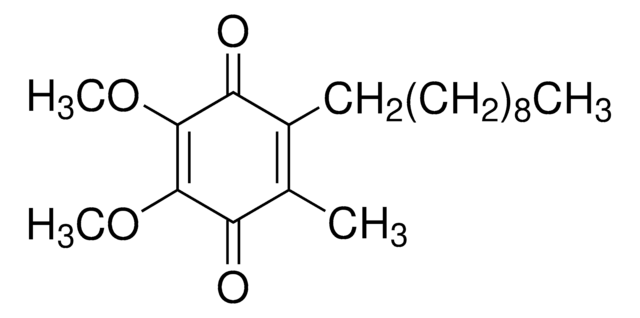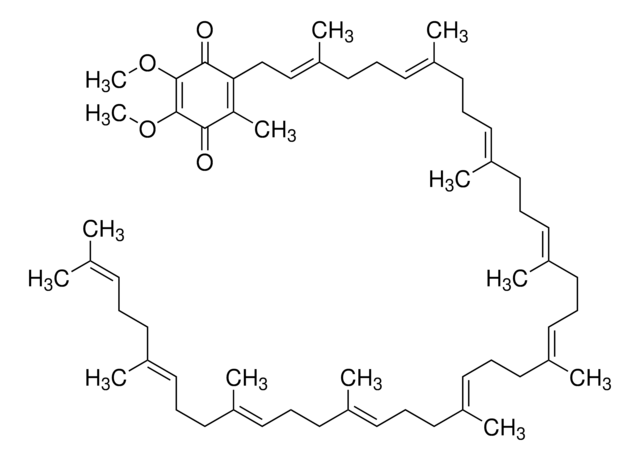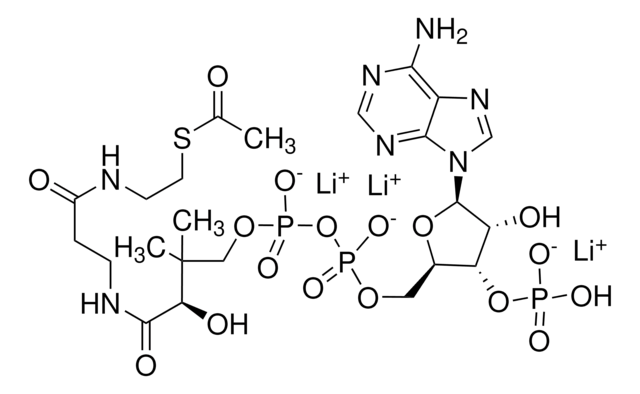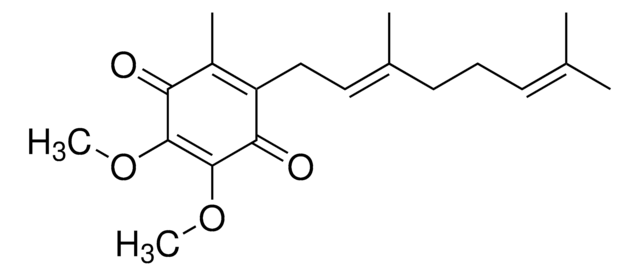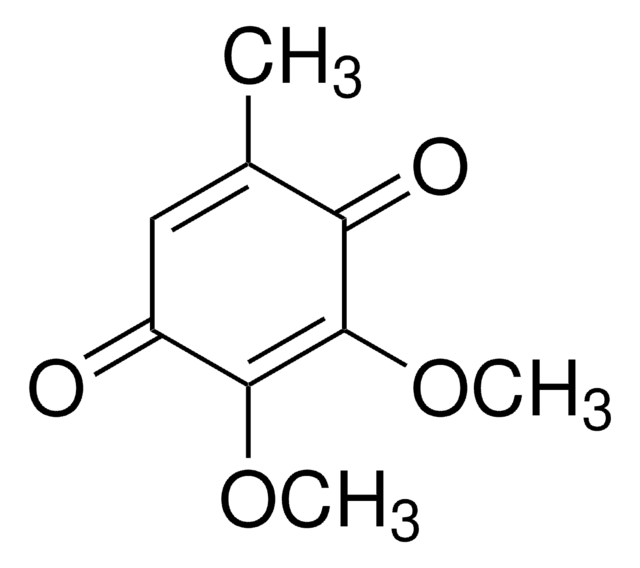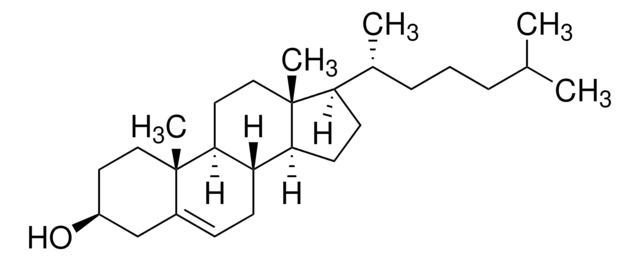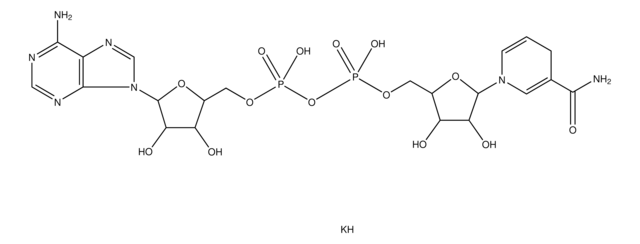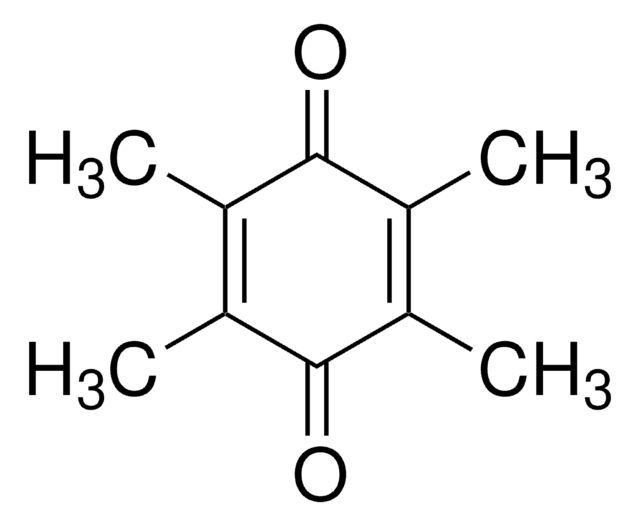추천 제품
Quality Level
분석
≥95%
양식
liquid
저장 온도
−20°C
SMILES string
COC1=C(OC)C(=O)C(C\C=C(\C)C)=C(C)C1=O
InChI
1S/C14H18O4/c1-8(2)6-7-10-9(3)11(15)13(17-4)14(18-5)12(10)16/h6H,7H2,1-5H3
InChI key
SOECUQMRSRVZQQ-UHFFFAOYSA-N
일반 설명
Coenzyme Q (CoQ) is localized to the hydrophobic domain of the phospholipid bilayer of mitochondria, plasma lipoproteins, and other biological membranes. It is a ubiquinone homolog with a short isoprenoid side chain.
애플리케이션
Coenzyme Q1 has been used to measure the mitochondrial respiratory chain complex 1 activity.
생화학적/생리학적 작용
Coenzyme Q1 (CoQ1) is a 1 isoprenyl group (not naturally occurring) member of a family of ubiquinones that share a quinine chemical group but differ in the number of isoprenyl chemical subunits in their tail. The CoQ compounds are lipid soluble components of cell membranes where they perform multiple functions such as electron and proton transport. The most well studied CoQ compound is CoQ10. CoQ1 is frequently used in comparison studies on the effect of isoprenyl chain length on CoQ functions or distribution and to identify quinone reductases.
기타 정보
Analog of coenzyme Q10 (not naturally occurring)
Storage Class Code
10 - Combustible liquids
WGK
WGK 3
Flash Point (°F)
Not applicable
Flash Point (°C)
Not applicable
개인 보호 장비
Eyeshields, Gloves, multi-purpose combination respirator cartridge (US)
이미 열람한 고객
Nandita Shangari et al.
Methods in enzymology, 400, 342-359 (2006-01-10)
Phase II conjugation of phenolic compounds constitutes an important mechanism through which exogenous or endogenous toxins are detoxified and excreted. Species differences in the rates of glucuronidation or sulfation can lead to significant variation in the metabolism of this class
Coenzyme Q cytoprotective mechanisms.
Tom S Chan et al.
Methods in enzymology, 382, 89-104 (2004-03-30)
C Edlund et al.
Biochemistry and cell biology = Biochimie et biologie cellulaire, 70(6), 422-428 (1992-06-01)
The lipid compositions of various regions of the human brain were investigated during aging and in Alzheimer's disease. The phospholipid amounts and compositions remained unchanged during aging. There were, however, considerable differences both in phospholipid composition and amount when the
Kathrin Fenn et al.
Microbiome, 5(1), 161-161 (2017-12-22)
The human gut microbiome has been linked to numerous components of health and disease. However, approximately 25% of the bacterial species in the gut remain uncultured, which limits our ability to properly understand, and exploit, the human microbiome. Previously, we
Chang Sun et al.
Nature, 557(7703), 123-126 (2018-04-27)
Alternative complex III (ACIII) is a key component of the respiratory and/or photosynthetic electron transport chains of many bacteria1-3. Like complex III (also known as the bc1 complex), ACIII catalyses the oxidation of membrane-bound quinol and the reduction of cytochrome
문서
Learn about the four membrane-bound protein complexes that make up the electron transport chain metabolic pathway supplying energy as ATP for cellular respiration.
자사의 과학자팀은 생명 과학, 재료 과학, 화학 합성, 크로마토그래피, 분석 및 기타 많은 영역을 포함한 모든 과학 분야에 경험이 있습니다..
고객지원팀으로 연락바랍니다.